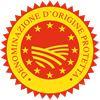Description
The Fagioli Bianchi di Rotonda PDO refers to fresh (pod) or dry (bean) legumes belonging to the species Phaseolus vulgaris L., deriving from the Fagiolo Bianco and Tondino (or Poverello Bianco) ecotypes.
Production Area
The production area of Fagioli Bianchi di Rotonda PDO is within the entire territory of the Pollino National Park and incorporates the municipal areas of Rotonda, Viggianello, Castelluccio Superiore and Castelluccio Inferiore, in the Province of Potenza, in the Basilicata region.
Production Method
Sowing takes place annually between April 20th and July 10th, either by hand or with the aid of a seeding machine. Wooden poles made of chestnut wood originating from forests in the Mercure Valley are built by hand in order to support the bean plants, using techniques that have been passed down through the generations. The climbing bean plants are planted using either the “pole” or “netting” system – unique to the area – which permits good aeration, preventing the formation of humidity between the rows of plants. Thanks to this system, the delicacy of the white bean is preserved and they are easier to pick. The legumes are hand-picked extremely carefully so as to not compromise the quality of the bean or seed; for the fresh product, harvesting starts on August 1st and ends by October 30th, while the beans destined for drying are harvested between September 15th and November 30th.
Appearance and Flavour
Fresh Fagioli Bianchi di Rotonda PDO pods are characterised by their white to yellow or ivory colour and the absence of stripes. The round or oval shaped seeds are white, without speckles. The seed coat is very thin.
History
The first historic document referring to white beans in the area is a monograph by Filippo Cirelli written in 1853, Il Regno delle due Sicilie descritto ed illustrato, where he highlights the importance of abundant water resources for bean cultivation in the production area. Another historical reference to their cultivation, which has become almost an anecdote, can be found in an article published in the Eco di Basilicata Calabria Campania newspaper on September 2nd, 1860, in which the quality of white beans from Rotonda is described, as well as the fact that even Giuseppe Garibaldi enjoyed eating them. Apparently, he stopped for a night in Rotonda on his way back from Sicily, and had the opportunity to eat these beans. He liked them so much, that he decided to take a small amount with him back to Caprera.
Gastronomy
Fresh Fagioli Bianchi di Rotonda PDO can be kept in their pods in the refrigerator for several days, while the dry beans have a longer shelf life if kept sealed in their original packaging, in a cool, dry place. These legumes are a fundamental part of the local Pollino gastronomy and are the key ingredient in many tasty typical dishes. These include “escarole and white beans”, “cabbages and white beans” and “cream of potato and bean soup”. The thin seed coat makes them very popular among consumers, as it means they take much less time to cook.
Marketing
The product is marketed as Fagioli Bianchi di Rotonda PDO, in the ecotypes Fagiolo Bianco and Tondino (or Poverello Bianco), fresh in their pods or dried. The fresh beans are available from August to October, in small net bags that can weigh up to maximum 10 kg, or in crates weighing up to 15 kg; the dried product is sold year-round in cartons, jute bags or other recyclable material with a maximum weight of 5 kg.
Distinctive Features
Fagioli Bianchi di Rotonda PDO are distinguished by their high protein content (up to 27%) and extremely thin seed coat; this is determined by the low limestone content in the soil and the abundant water resources that favour the accumulation of starch during the development of the seeds.




















